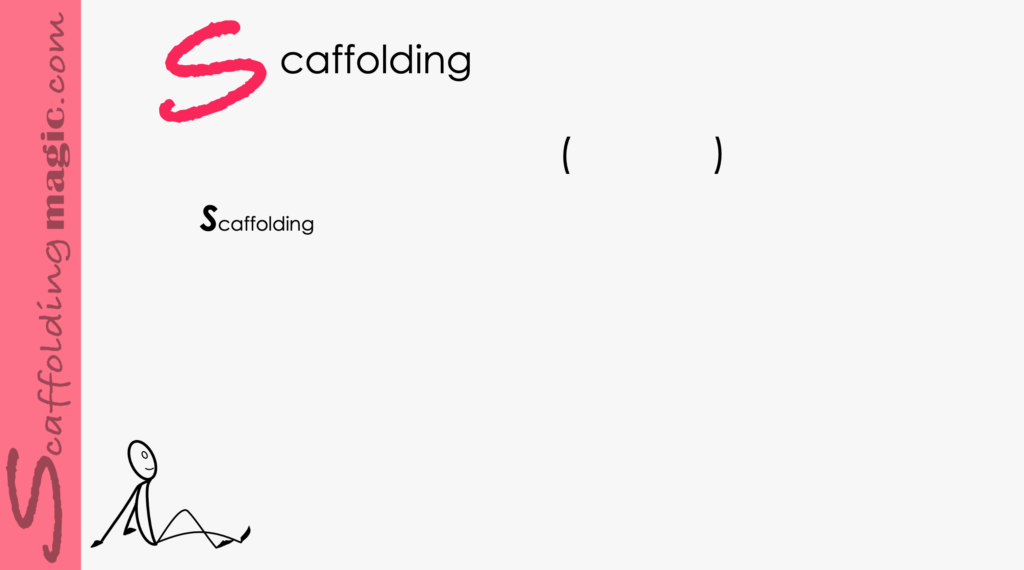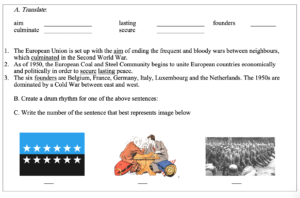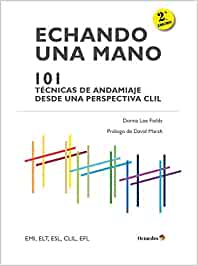You caught a beauty!!!
Download PDF of scaffold here.

Download PDF of scaffold here.
theory behind scaffold..
Helping our shy or underperforming students to participate verbally in a language or content class is often challenging. Many times, the underlying reason for their reluctance is simply not wanting to expose their lack of knowledge of the subject or – more likely – because they don’t believe they will express themselves well.
These types of students often have backgrounds that have not prepared them for mainstream schooling’s way of learning, speaking, reading and thinking.* The result is that they feel inferior when expected to participate in classroom activities that:
- are based on a foundation of knowledge they have not yet achieved;
- require higher order thinking skills strategies that they have not yet developed;
- assume that they have verbal abilities (in both their home and classroom languages) which, in fact, they lack.
It is essential, therefore, that we remember to incorporate language outcomes in our lessons, especially because, while we almost always remember to include the content objectives, we usually forget or didn’t know how important it was to include language objectives – those skills that will help our students to express themselves with the appropriate academic language of the topic. We have the opportunity to give our students a strong foundation and help them feel more confident about their verbal abilities.
One way to achieve this is to present academic language through music. Rhythm helps students to develop key brain functions that not only enhance musical learning but also academic and social skills. It builds and strengthens connections between brain cells and improves memory and the ability to differentiate sounds and speech. It nourishes the process of learning, which includes:

- sensory integration
- attention
- critical thinking
- emotional maturity
- motor capacities **
Memorising academic language works only as long as it takes students to take an exam and then forget. On the other hand, this scaffold addresses academic language in a variety of ways: through linguistics (verbalisation, reading and translanguaging***), images and rhythm. It assures the deeper assimilation of key knowledge and terminology so that students are more confident in what they know and the meaning behind the knowledge. As a formative assessment, they’ll answer higher-order thinking questions. The example we give here is from a lesson on economics, and you’ll see how you can adapt the activity to any subject you are about to begin.
As an extension, you can include higher-order thinking questions so that students use the academic language in meaningful ways – and personalise that knowledge. The example we give here is from a natural science unit, and you’ll see how you can adapt the activity to any subject you work in.
* (Zeiers, 2008)
** Konrad, R.R. (200), ‘Empathy, Arts and Social Studies’.
*** Translanguaging: Listening to, reading about, and/or watching a topic in one language, and discussing or writing about it in another. The technique is used to deepen learning not to make it easier. In other words, it must not be overused and one must make be certain it is serving the aims/objectives of the course. (Mehisto, 2017)
Step by step…
- Create 4-5 textboxes (or the number of groups of students you have) in which you will place sentences, images and questions.
- Choose 5-6 paragraphs from the unit you are about to begin, that represent key elements – from various pages of a unit if you want.
- Divide these paragraphs amongst the textboxes.
- Separate them by sentences and number the sentences.
- Identify academic language in the paragraphs that your students might find challenging. Type them above the paragraphs,
- Find images that represent key ideas from the paragraph and place the below the paragraphs.
- If you can, record or find recordings of the paragraphs and make these available to the students.
- Write 2-3 higher-order thinking questions (to give students the opportunity to discuss the ideas of the paragraphs and the academic language).
- Give groups of students a set of the textboxes. (Download the template here.)
- Students do the following:
- translate the academic language
- verbalise the paragraphs aloud (and/or repeat the audios)
- create rhythms for the paragraphs, using whatever tools/instruments they wish (hands, feet, musical instruments, rulers, pencils, desks, etc.)
- record themselves repeating the sentences with the rhythm they have invented
- match the images to the appropriate sentences in the paragraphs
- play their recordings or say the paragraphs live in front of their classmates. (In this way, they are teaching each other the academic language from the unit.) The other groups repeat the paragraphs with the rhythm created by the others.
- answer higher-order thinking questions
- Formative Assessment: Students ask each other to put the terms in their own words and/or show images of the terms and other groups have to identify them and explain what they are – with the rhythm invented by that group.
- Reflection: Students write 75-100 words on how it felt to interact with the information through rhythm.
To the left: Example of adding rhythm to text.
To the right: Example of text boxes to give students.


Scaffoldingmagic.com is your entryway into DYNAMIC bilingual learning methodologies, such as Phenomenon-Based Learning, CLIL, EMI, and ESL. You’ll find ways to implement critical thinking tools (DOK) to promote higher level thinking, the growth mindset, instill an ethic of excellence, deep reflection on learning, and all through multi-cultural, interdisciplinary activities. We have the keys to turning competences into action and to creating collective efficacy in your school so you move ahead as a unified, enthusiastic team.







